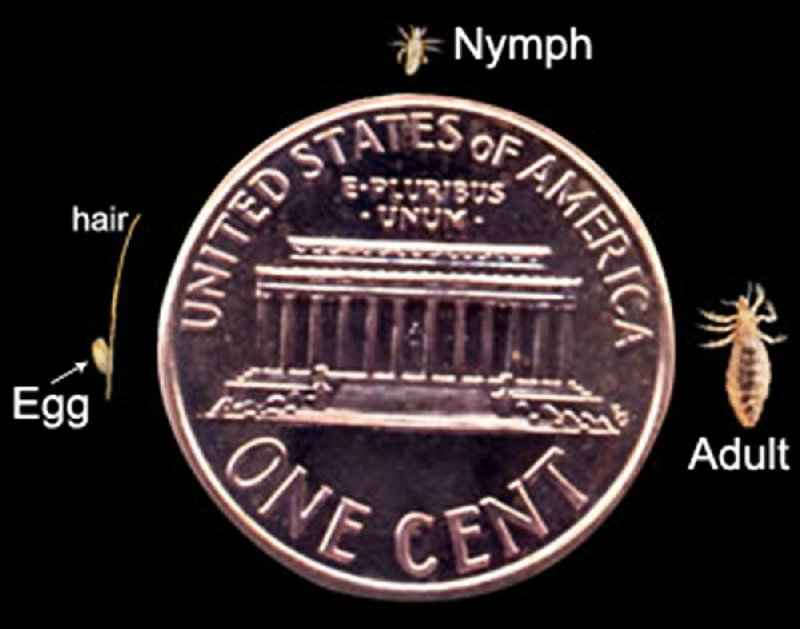Aime Townley, mother of three, is one Little Rock resident who admits she might be a bit freaked out over head lice.
She has drilled her kids on tactics public health authorities place high on their lists of effective lice-prevention strategies.
Daughter Madolyn, 9:
"One of my friends two years ago had head lice and they wore a hat to school, and someone tried on the hat because they thought it was cool, and they got lice, and they passed it around, but luckily I didn't get it.
"My mom says really not to try on other people's hats because you never know if they have lice or not. And so I decided not to. Because I wanted to be sure that they didn't have it, and if they did, I didn't want to get it."
The American Academy of Pediatrics offers essentially the same advice in its updated policy statement on head lice (bit.ly/1VEMkEx), with one addition, advocating the use of sports helmets: "No one should refuse to wear protective headgear because of fear of head lice."
Because most children are not so careful, teachers and school nurses find themselves on the frontline of infestation prevention, professionally alert for telltale head scratching.
"It peaks and then it ebbs," says Paula Smith, a registered practical nurse who is the Arkansas Department of Health's state school nurse consultant. "At the beginning of school we usually see a lot. After long weekends, holidays, we'll see increased incidence of head lice because people have spent the night with folks or gone over to people's houses, or family have come in from other places and inadvertently had lice or nits and shared."
Prevention can really help, Smith says, suggesting a few tips:
• Teachers shouldn't have the kids hang coats or backpacks together in a coat closet or on a coat rack. A coat can hang from the back of its owner's chair. "Keep their stuff with them," she says.
• In preschool and kindergarten, extra clothing or towels used at naptime should be sent home on Fridays for laundering. "If you have a problem with kids forgetting, take used towels from the athletic department and wash them in hot water, dry them in a hot dryer," she says, "so you've got towels in case kids forget them."
• If a child turns up with lice or nits, also check every other member of the family.
• If the infested child has been to a sleepover party, alert the parents of all the other children who attended.
Parents shouldn't expect school staff to be able to search every child for head lice, Smith says. If they notice their children scratching, parents should look at their heads under bright
light. "Have them bend over so you can look around the hairlines. Look up next to the scalp. Don't look way out on the hair. Part the hair and look for bugs and nits right next to the scalp," she says.
Any tiny moving item is suspect, but you're more likely to spot nits than nymphs or adult lice. Nits are shaped like sesame seeds and each will be stuck to a hair close to the scalp. The female injects pigment into the nits to match the host's hair color; a dandruff-colored nit has likely hatched. Nits are often confused with dandruff and dirt, but those move when flicked with your finger and nits don't.
If a child's diagnosed with lice, follow instructions on any chemical treatments.
"People try to cut corners," Smith says. "If they have three kids, they get one bottle for three kids. That's not how that works, especially if they have medium to long hair."
What about using essential oils or other products advertised as lice repellents? Smith thinks such strategies probably won't work, but if they also wouldn't hurt, she won't waste time arguing against them.
One that can cause harm, according to the federal Centers for Disease Control and Prevention, is using insecticide fogs or sprays in the home: "They are not necessary to control head lice and can be toxic if inhaled or absorbed through the skin."
Dr. Carrie Brown, a pediatrician at Arkansas Children's Hospital, adds, "There's a variety of shampoos out there that are supposed to help prevent your child from getting lice. I don't know that any of those have ever actually been tested and whether or not any of those statements are true. ... I don't know that I would go and spend a lot of money to purchase them to wash my children's hair even if there were an outbreak of lice in the school that my kids go to.
"Head lice really has nothing to do with how clean or dirty you are. In fact dirty hair is probably less likely to be attractive to lice than clean hair." The louse's nit cement doesn't stick to oily hair as well as it does to clean hair.
-- Celia Storey
ActiveStyle on 10/12/2015
